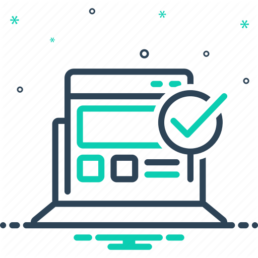
What is a Robotic Process Automation (RPA)?
Robotic Process Automation (RPA) is a software technology that makes it easy to build, deploy, and manage software robots that emulate humans actions interacting with digital systems and software. Just like people, software robots can do things like understand what’s on a screen, complete the right keystrokes, navigate systems, identify and extract data, and perform a wide range of defined actions. But software robots can do it faster and more consistently than people, without the need to get up and stretch or take a coffee break.

Applicability
Automation Anywhere Intelligent Automation Cloud deployment architecture adopts a privacy “first” approach to the protection of customers’ infrastructure and data. InfoSec is ingrained within every aspect of the Automation Anywhere Digital Workforce Platform, spanning security of data, credentials, and ability to enforce fine-grained role-based access control (RBAC) at scale.
Automation Anywhere delivers Robotic Process Automation (RPA) engineered via DevSecOps to ensure built-in security to help you meet the most rigorous governance, trust, and compliance requirements:
Secure Platform:
Security and control are built into every layer of the Platform. Enterprise-class encryption protects your data both at rest and in motion. Granular role-based access controls make data available to authorized users only. Audit logs and trails provide proof of compliance, show transparency and demonstrate operational integrity.
Data Protection By Design:
GDPR requires that enterprises take all measures to protect sensitive data such as PII. With the most secure features of any RPA solution today, including web application firewalls, application load balancers, bot level separation of duties, encryption at rest and in transit users are assured that personal information is secure.
Secure Cloud Operations:
Automation Anywhere Cloud operations team monitors all operational processes within the platform, logs continuously authenticating all users and their authorization status at every stage of an automated business process. In the event of a data breach detailed logs are generated for forensic analysis and reporting.
Objective
Robotic Process Automation is not a physical robot sitting at a desk performing tasks. It is a new alternative to improve productivity, unlocking higher Return on Investment than ERP implementations and Software as a Service (SaaS) which requires more investment in terms of time and cost.
It is the first step and necessary foundation in the enterprise digital operation journey, before implementing cognitive, chatbots and artificial intelligence.
Key objectives of implementing Robotic Process Automation are as follows –
- Improve customer experience
- Improve accuracy
- Manage controls and security
- Higher efficiency
- Reduction of monotonous work
- Cost saving

Approach
RPA helps you automate the processes defined by your legal and business teams to be GDPR-compliant.
- Handle Customer Data in Conformity with GDPR Regulations Meant To Ensure Safety. Managing customer data is not only operationally simplified (compared with manual management, done by means of cross-system shares with the all-mighty copy-paste procedure) when performed by software robots, but also less expensive.
- Handle Customer Consent. For instance, software robots could create the double data entries involved in checking customer data against consent and revocation databases. The fleet of robots can check customers’ consent and revoke requests, and further, even implement high-level decision making in order to act in accordance with the results of the requests check. RPA can handle customer consent consistently, across various systems where bits of that data are located. This potential of RPA is a gold mine for marketing functions, because it mitigates the risk of consent related non-compliance.
- Align with Data Security Measures. RPA easily complies with the requirement of data anonymity by, e.g., use of pseudonyms instead of real names and storage of the pseudonyms in the system. More, it can spontaneously inform customers about potential data breaches, thereby minimizing the inconvenience in case of such a disaster scenario.
- Streamline Adherence to GDPR. The tasks involved in the manual implementation of compliance are highly repetitive, time-consuming and dull. Moreover, as reported by McKinsey & Company, the process is burdensome, and has high running costs. Use of RPA for GDPR compliance is thus a much-needed simplification. Especially when the future demand for services such as data protection by design and by default is expected to be high, it is fully justified to bear the costs of RPA implementation and maintenance. On the long run, the return on investment should make automation a more cost-competitive solution than manual data processing.
- Automatically Prove Compliance. The generation of reports and audit logs is a default outcome of GDPR Compliance with Robotic Process Automation. This benefit is peculiar to enterprise-wide automation platforms.
Why CyberSRC®?
Established in January 2018, CyberSRC Consultancy offers the full machination of cyber security services ranging from threat intelligence, VMS to general advisory services in areas pertaining to Cyber security such as vulnerability attacks, compliance, and cyber security regulations, and laws. We are into system audits such as ISNP Audits, NBFC Audits, UCB Audits, PPI Audits, and SEBI Audits. We provide our solutions with better accountability. We are a certified assurance firm. We are an ISO 27001 certified organization, backed by a very diverse and dynamic team which have a combined experience.
